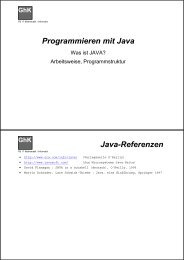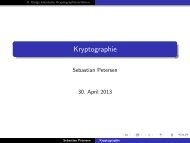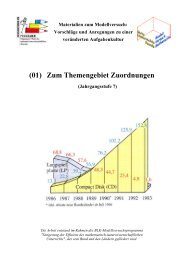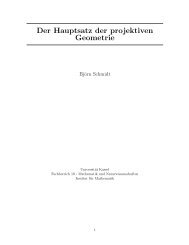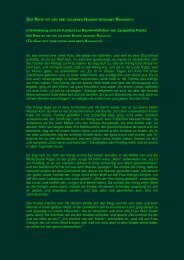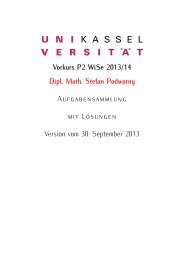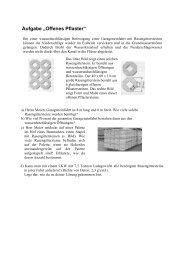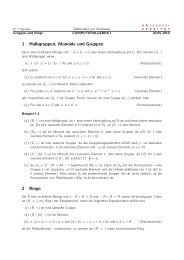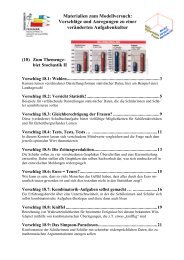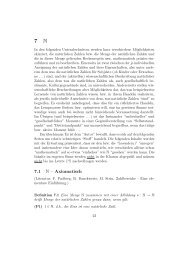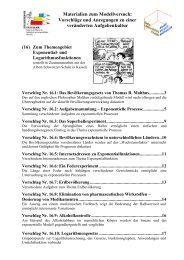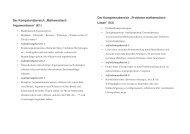Orthogonal Polynomials and Special Functions
Orthogonal Polynomials and Special Functions
Orthogonal Polynomials and Special Functions
Create successful ePaper yourself
Turn your PDF publications into a flip-book with our unique Google optimized e-Paper software.
October 1996 <strong>Orthogonal</strong> <strong>Polynomials</strong> <strong>and</strong> <strong>Special</strong> <strong>Functions</strong> Newsletter 12<br />
grals, Series, <strong>and</strong> Products was originally planned by<br />
Ryzhik, who was later joined by Gradshteyn. The English<br />
translation was first published in 1965, <strong>and</strong> five editions of<br />
the volume followed in the next thirty years. In each edition<br />
there were corrections of errors <strong>and</strong> extensions of the<br />
material. Ryzhik died in World War II <strong>and</strong> Gradshteyn<br />
died during preparation for the fourth (1980) edition. The<br />
subsequent editions were <strong>and</strong> are edited by Alan Jeffrey.<br />
The fifth edition of the book has been put on CD, which<br />
can be viewed from an IBM PC (or compatible) running<br />
Microsoft Windows 3.1, or 95, or NT, on a Mac, or on certain<br />
UNIX X-windows machines. Of course, there are minimum<br />
DRAM contraints, which only the foolhardy would<br />
ignore. I ran the CD using Windows 3.1. One can scan<br />
the book much as one can read the text of the printed fifth<br />
edition. But here one wants more, much more.<br />
The major question is whether one can efficaciously<br />
search the CD so as to find integrals <strong>and</strong>/or integr<strong>and</strong>s<br />
involving expressions that are of interest to the user.<br />
The manufacturer’s guide asserts that the CD-ROM offers<br />
desktop access to the 20,000 fomulas for the integrals,<br />
sums, etc. The TEX source code for most formulae is obtained<br />
by clicking on a nearby icon. To perform the search<br />
one need study the TEX code for the expression that occupies<br />
your interest, activate the search panel, <strong>and</strong> fill in<br />
some variant of the studied TEX code. Wildcards are allowed.<br />
The sad story here is that the search engine used preempts<br />
<strong>and</strong> prohibits use of the vital TEX characters ( , ) , <<br />
, > , = . It is very difficult to adapt the search program<br />
to do something other than find quotations of names of<br />
special functions. The TEX used on the CD is AMS-TEX<br />
which is at this time not a usual dialect <strong>and</strong> thus provides<br />
a minor nuisance. I believe that the problem of designing a<br />
search mechanism to find TEX encoded mathematical expressions<br />
is interesting <strong>and</strong> challenging. I think it would<br />
be of interest to check with the experts working with the<br />
Latex3 project to see if they have suggestions on how it<br />
might be done.<br />
Marvin Rosenblum<br />
(mr1t@virginia.edu)<br />
Problems <strong>and</strong> Solutions<br />
Thus far 15 problems have been submitted five of which<br />
have been solved (#1, 4, 6, 7, 10), <strong>and</strong> one of which is<br />
new (#15). Still unsolved are Problems #2, 3, 5, 8, 9,<br />
11, 12, <strong>and</strong> 13. Please send in your solutions! A solution<br />
of the Problem #14 is presented in the current issue.<br />
13. Product of Chebyshev <strong>Polynomials</strong>. For any pair<br />
of positive even n, m ∈ N let<br />
F (n,m) (x) = 2 n<br />
n−1 <br />
<br />
m<br />
cosh<br />
2<br />
k=0<br />
arccosh<br />
<br />
(2k + 1)π<br />
<br />
x−cos<br />
n<br />
<br />
= 2 n<br />
n−1 <br />
<br />
(2k + 1)π<br />
<br />
Tm/2 x − cos<br />
n<br />
<br />
,<br />
k=0<br />
where Tm(x) denotes the Chebyshev polynomials of the<br />
first kind. These functions occur in statistical physics.<br />
They constitute polynomials in x<br />
F (n,m) (x) =<br />
nm/4 <br />
Aj(n, m) x 2j<br />
j=0<br />
whose coefficients Aj(n, m) are integers. Show the symmetry<br />
F (n,m) (x) = F (m,n) (x) ,<br />
<strong>and</strong> give a representation of the coefficients Aj(n, m).<br />
Christian Hege<br />
(hege@zib.de)<br />
15. Critical Values of <strong>Orthogonal</strong> <strong>Polynomials</strong>. Let<br />
Pn be an OP system on [−1, 1] with respect to a weight<br />
function w(x). Denote −1 < yn,1 < . . . < yn,n−1 < 1<br />
the set of all critical points, i.e. the set of all zeros of the<br />
derivative P ′ n. The values Pn(yn,k), k = 1, 2, . . . n − 1 are<br />
known as critical values of Pn. Let N(Pn) be the number<br />
of all different critical values of Pn.<br />
Problem 15.1. Describe the set of OP systems with the<br />
property N(Pn) = O(1), n → ∞.<br />
It is clear that for the first kind Chebyshev polynomials<br />
Tn one has N(Tn) = 2 for all n.<br />
Problem 15.2. Given w(x), find the value<br />
a(w) := lim sup<br />
n→∞<br />
N(Pn)<br />
n<br />
.<br />
Leonid B. Golinskii<br />
(golinskii@ilt.kharkov.ua)<br />
First Solution of Problem 14<br />
A Trigonometric Integral<br />
by I.J. Zucker<br />
(jz@maxwell.ph.kcl.ac.uk)<br />
The proposed question was to evaluate the integral<br />
I =<br />
π/4<br />
ln(sin<br />
0<br />
3/2 (x) + cos 3/2 (x)) dx .<br />
In the following analysis the Clausen function of order 2<br />
(se [1])<br />
∞ sin(rθ)<br />
Cl2(θ) =<br />
r2 ,<br />
r=1



